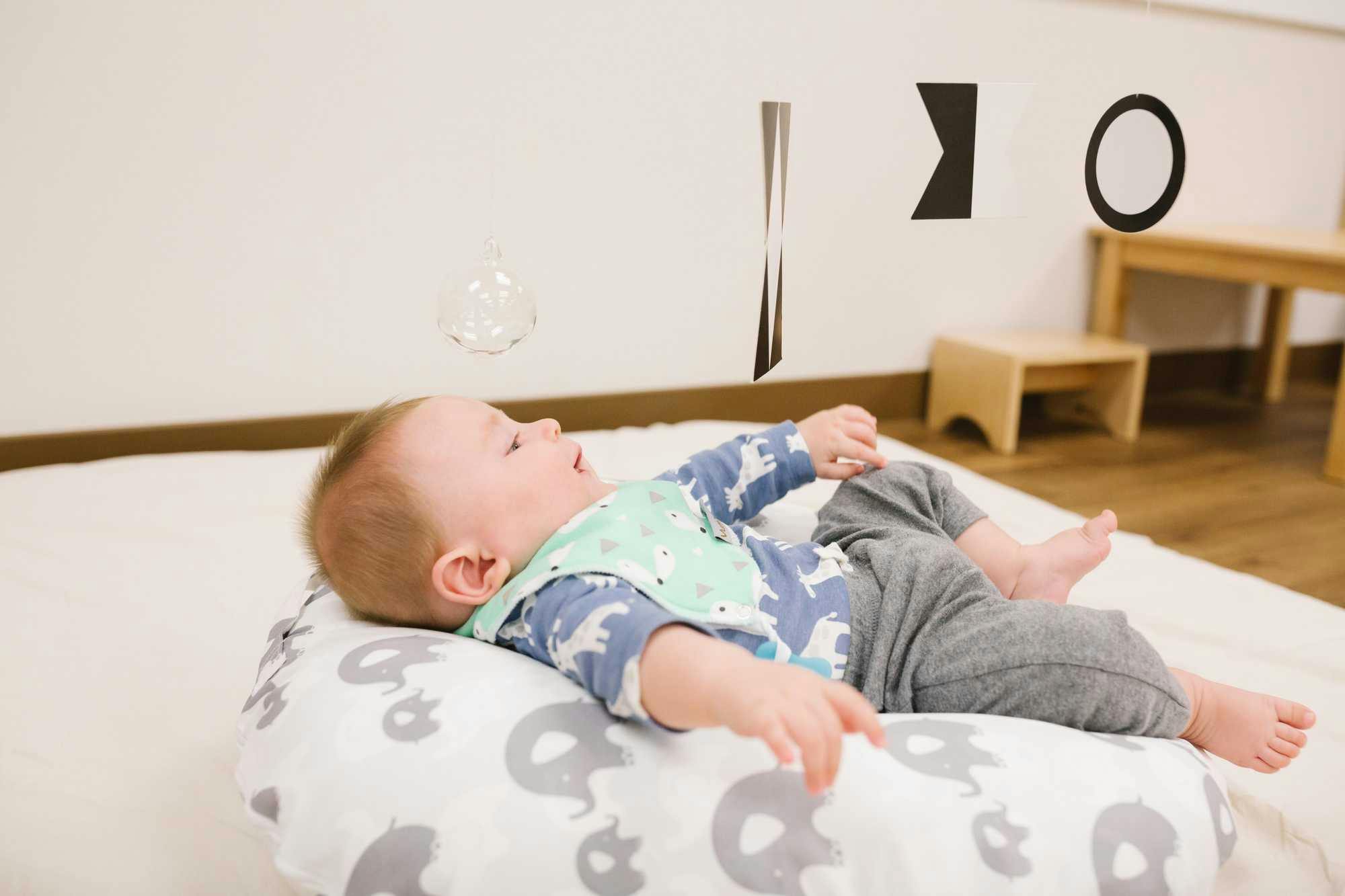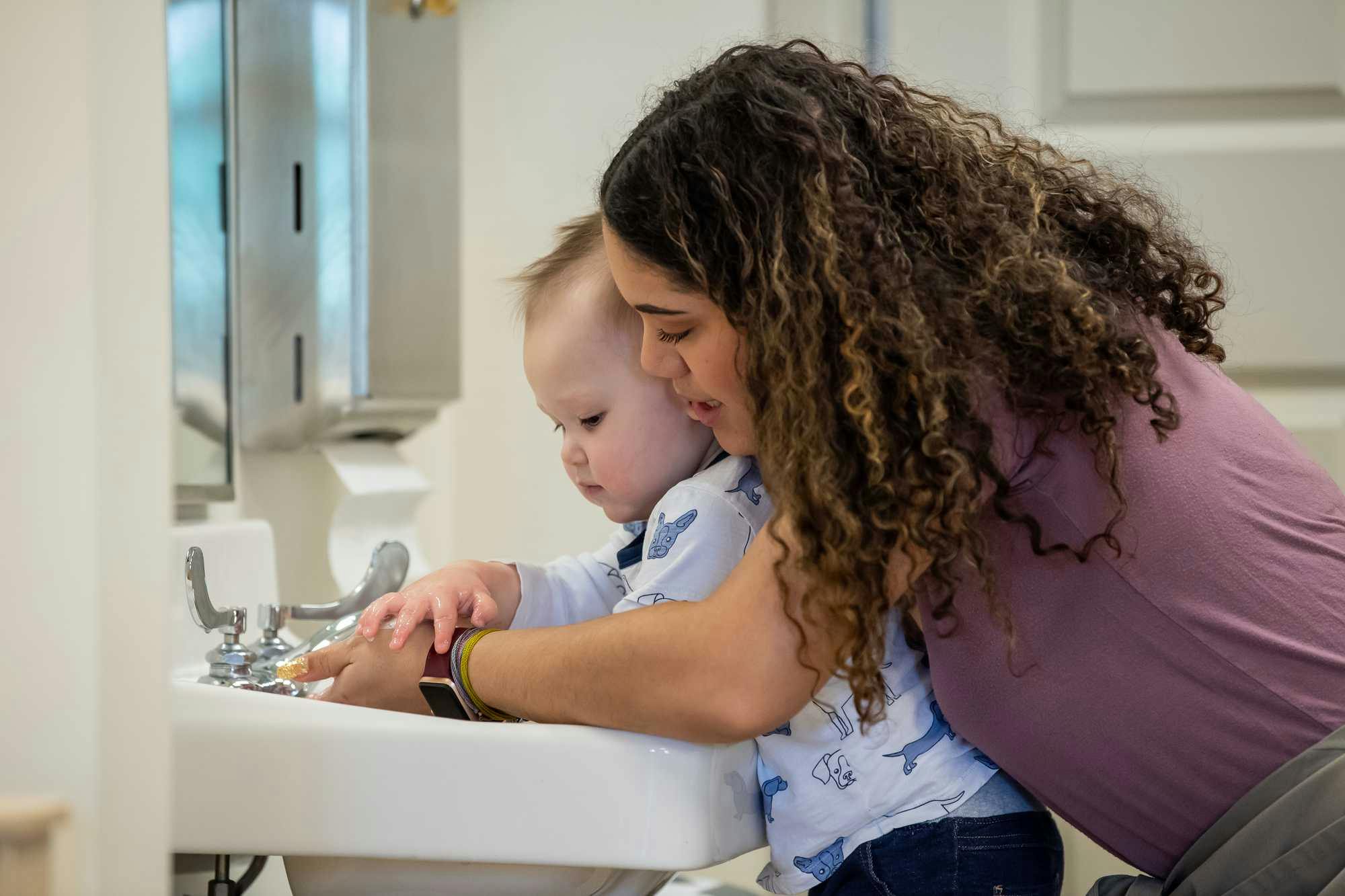Tips for the First Few Months
the symbiotic period.
Montessori called the first 6-8 weeks of a child’s life the symbiotic period, a time of togetherness, bonding, and adjustment. This is a period of adaptation—for both your baby and you! It’s a time to take things slowly, to get to know one another, and to gradually introduce your baby to the wonder and excitement of the world around them.
points of reference.
When your child is first born, she has comforting memories of her time in the womb—things like her mother’s voice and heartbeat, the freedom to move, and access to her own hands. These are the newborn’s points of reference: the familiar environmental conditions she experienced prior to birth. When possible, we want to maintain these points of reference consistently after birth. When that is not possible, we want to create new points of reference through voices, skin-to-skin time, and consistent routines. The goal is to help the child make the transition between the womb and the wider world, helping her connect to and build a basic trust in the new environment
Supporting the Newborn's Points of Reference
- Connection to Caregivers
Caregivers are the newborn’s first crucial point of reference: their voice, their smell, their touch, and their heartbeat. We can help the baby feel comfortable and secure in her new environment by providing plenty of skin-to-skin time, conversations and songs, and a topponcino for when the baby isn’t being held by her primary caregivers.
- Access to Hands
- Freedom of Movement
Preparing the Environment
In a Montessori home or classroom, one of the most significant ways a caregiver can actively support a child is by preparing the environment for her independence and learning. This environment includes both tangible and intangible elements and are all carefully chosen to enable the child to move, learn, and grow with as much independence and joy as possible.
A Prepared Environment for Newborns
The goal in preparing the environment is to give the child space to move, uninterrupted time to concentrate, and an organization that gives her access to the materials she can use to achieve her development. While everyone’s home and context is different, the principles of independence, freedom of movement, and a helpful structure are universal. Here’s a common example of how these principles are applied to prepare the newborn’s environment:
The Newborn's Nursery
- Completely babyproofed
In many Montessori homes, a completely babyproofed space is provided where the child can spend time alone (i.e. without an adult actively monitoring them) if needed and where she can safely observe, concentrate, and explore.
- A floor bed
- Shelves low to the ground
- Artwork at the child's level
- Movement area
The Child's Work
In the child’s bedroom, there will often be specially designed materials that engage the child’s interest, encourage her to concentrate, and allow her to practice skills important for her development.
- Mobiles
A systematic progression of visual and tactile mobiles is provided to entice the child to concentrate while giving her an opportunity to practice important skills like distinguishing high contrast shapes, visually tracking moving objects, and hand-eye coordination. Examples include the Munari mobile, the Gobbi mobile, and octahedron mobile.
- Mirror
- Objects to grasp
Routines and Language
An intangible but still crucial part of the environment are the routines and language caregivers use to structure the day and provide clarity for the child’s developing understanding.
- Establish routines
Consistent routines help your child make sense of the world. They provide security so she can focus on the important and fun work of connecting with you and learning about the world. However you choose to structure your day, try to keep it consistent. Go slowly so your child can follow your actions, and try to do caregiving tasks in the same way every time so your child can begin to anticipate and predict what will happen next.
- Real, rich language
more resources:.
Want to learn more about applying Montessori at home, starting at birth? Check out these helpful resources:
A Beginner’s Guide to Montessori for Babies



